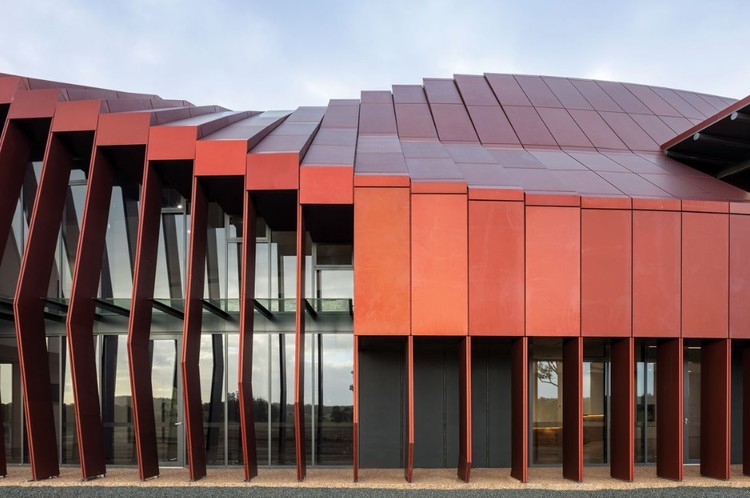
Bosske Architecture has designed a new dairy farm facility with a robotic creamery in Northcliffe, Australia. Made for Bannister Downs Dairy, the project creates a ‘grass-to-gate’ facility for the family run, vertically integrated producer. The project was designed to showcase innovation in dairy production and ethical milking practices by opening its doors for public viewing and education.

The Bannister Downs building is a dairy & creamery with milking, processing, bottling and packaging all in one location and it is the only planned facility of its kind in the world. The facility houses state-of-the-art robotic milking and other large-scale processing equipment; administration staff and farm workers; café and general function area/space; exhibition gallery and a viewing gallery to all the processing areas.

As the team states, the main building needed to reflect large scale, state of the art processing whilst retaining a local and rural identity. The building design is consequently split into two distinct addresses: the ‘hard working’ back-of-house (the factory); and the front-of-house (the barn) for visitor experience wrapping around its perimeter. The barn follows the boundary curve, and visually envelops the factory behind. The two functional areas overlap along a public viewing gallery on Level 1, an area made for visitors to experience the full sequence of milk production from milking, processing, and packaging to dispatch.


The dairy is developed around the idea of voluntary milking for the cows, 24 hours a day. The herd is milked by rotary robotic milking machines that can also analyze and help maintain the health of the cows. Significant water collection, storage and appropriate reuse on site is incorporated into the design as well as 100KW array of roof mounted solar panels. The factory interiors work in a linear sequence of rooms, starting with the main dairy to the north all the way through to the loading dock to the south, with other program feeding into the production line. Bannister Downs emphasized transparency in its operation that should be evident to workers and visitors alike. The interior planning prioritizes views of the farm, clear wayfinding and visual connections throughout the facility whilst still meeting all the brief, technical and statutory requirements of food processing.

The barn is conceptually animated, transitioning from a typical Australian shed profile at the entry through to a traditional gabled barn towards the milking end. The façade twists along its path, accommodating its changing functional program within whilst creating a dynamic elevation facing the landscape. The red anodized panels change the buildings appearance throughout the day, from deep reds, to purple hues, and then to brilliant gold.
News via Bosske Architecture















